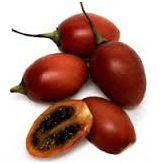- Granny Smith, Royal Gala, Golden Delicious and Pink Lady are just a few of the thousands of different kinds of apple that are grown around the world! You can make dried apple rings at home - ask an adult to help you take out the core, thinly slice the apple and bake the rings in the oven at a low heat.


- Apricots can be eaten fresh or dried - both are packed with vitamins! Fresh apricots have a soft and slightly furry skin. They make a good lunchbox snack. Apricots are also high in beta-carotene - this helps us keep our eyes and skin healthy.

- It is sometimes called an avocado pear. Avocado is often mistaken for a vegetable because we eat it like a salad vegetable, but it is actually a fruit. Avocados are at their best when they are ripe and very easy to prepare. They can simply be cut in half with the stone removed and eaten with a little salad dressing or chopped into a salad. Avocados are a good source of essential fats (the good ones) – one of the few fruits or vegetables that contain fat.

- Bananas make a nutritious snack! They are a great source of energy and contain lots of vitamins and minerals, especially potassium, which is important to help cells, nerves and muscles in your body to work properly and it helps to lower blood pressure. They have a thick skin to protect them, which is green before bananas are ripe, and get more yellow in colour and sweeter in taste as they ripen. We peel away the skin and eat the soft fleshy part of the fruit underneath. Bananas grow in hanging clusters, sometimes called hands, on the banana plant in tropical regions like Southeast Asia. You can eat them raw, baked, dried or in a smoothie. Why don't you try mashing it up and have it with yoghurt or porridge or even on brown toast?

Cherries are stone fruits - just like their friends the apricots. A cherry tree can carry on producing fruit for 100 years! Cherries grow from stalks in pairs. Ahhh! Sweet ones like the Bing cherry are nicest on their own or in a fruit salad. Sour ones like Morello cherries are tastier cooked.

- This citrus fruit is the smallest of the tangerines. The skin of Clementines can be peeled away easily and the segments don't contain pips, which makes them a lot less messy to eat than some other varieties. They smell so delicious and naturally sweet. They are often eaten at Christmas time. Citrus fruits are a good source of vitamin C.

- Dates are the fruit of the date palm tree and lots of them are grown in Egypt and California (USA). Dried dates make a super sweet snack. They can be chopped and sprinkled on cereal instead of sugar or honey.

- These little, almost black berries grow on bushes all over the countryside in summer! They aren't good to eat raw but they are berry nice cooked with other fruits in pies or used to make jam! WARNING: Some berries are poisonous, so don't pick them without checking with an adult first. And never eat the leaves!

- Figs are soft sweet fruits, full of small seeds and often eaten dried. They grow on trees. Fresh figs are delicious and jams and chutneys are often made from them. The skin of a fig is very thin and ripe figs do not keep or travel very well so in warm countries figs are dried.

- Grapes grow in bunches on vines. On the inside, they are sweet, juicy and jelly-like. Green grapes are also called white grapes and are dried to make sultanas. Purple ones can be called black grapes and are dried to make raisins. There are red grapes too - red grape juice tastes totally delicious!


-The guava fruit is widely grown in tropical and sub-tropical regions of the world. It can be round to pear-shaped with a thin skin that is green and turns yellow as it ripens. The flesh can be white or even pink, and the seeds can be eaten. The guava fruit contains lots of beta-carotene (which forms vitamin A in the body) and vitamin C. The flesh can make a great snack or dessert chopped up, or scooped straight from the skin.

- Honeydew melons grow on trailing vines along the ground. There are THOUSANDS of different kinds of melon - they all have a hard outside, which you can't eat, and a juicy sweet inside that makes your mouth water!

- A kiwi fruit is hairy on the outside and soft in the middle. It is one of the only fruits to be green when it is ripe. You can scoop out the juicy green flesh with a spoon just like a boiled egg! One kiwi fruit contains all the vitamin C you need for a whole day. Vitamin C helps your body to heal cuts and bruises and to fight colds.

- It is said that, long ago, explorer Christopher Columbus carried lemons on his ships - the vitamin C stopped his sailors from getting a disease called scurvy. You can squeeze out the juice and mix it with water and a little sugar to make a zingy drink.

-Mangoes come in different shapes and sizes. You have to peel off the skin to eat the soft, juicy flesh inside. Mangoes grow best in hot countries like India and Malaysia. There are more than 2,500 different kinds of mango in the world!


-There are many types of melon; honeydew, cantaloupe and galia, to name a few. The flesh of these different melons, which is the bit we eat, comes in different colours; cantaloupe is usually orange because it is high in beta-carotene, honeydew is usually pale-green to yellow and galia is usually a deeper green. Unlike what its name may indicate, the watermelon is not actually a melon, just a distant relative of the melon. Its flesh is usually pink as it is high in the antioxidant, lycopene. Melons grow off a vine, and have a strong outer skin to protect them, which we don't eat. Melon goes great chopped up in a fruit salad, adding lots of colour and flavour. It is very refreshing as a snack in the hot summertime too!

- Although mushrooms are not fruits or vegetables (they are actually a type of fungus), they still count as one of your 5 A DAY. They are tasty on toast with scrambled egg and a grilled tomato. WARNING: Picking wild mushrooms is not safe! Only an expert can tell which ones are poisonous.
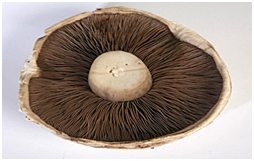
- Nectarines are a type of peach with a thin smooth skin and firm flesh. The skin of a peach is more furry but the fruit tastes almost exactly the same. You have to be very gentle with them - they can bruise, just like you do, and the fruit will go bad where the bruise is.
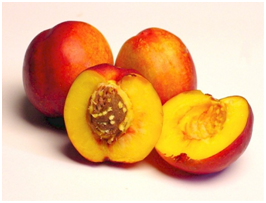
- Your brain looks like a giant walnut. To make it grow it needs protein, which is found in nuts! A nut is actually a fruit, or the seed of a fruit. There are lots of different kinds but they all have a hard, dry shell around a kernel (the part of the nut you eat). A Brazil nut tree can live for 500 years! WARNING: Children under 5 should not be given whole or chopped nuts due to risk of choking. And please don't eat nuts if you are allergic to them!

- Olives are really fruits and they grow on trees. If green olives are left on the tree, they turn black. Have you had them on a pizza? Olives come in many sizes and flavours so you may need to try lots of different ones to find out which ones you like best.
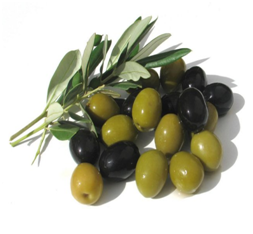
- Oranges are really famous - they are one of the most popular fruits in the world! Oranges grow best in countries such as Spain and Italy - where it's hot and sunny during the day and cooler at night. A glass of pure orange juice counts as one of your 5 A DAY. Try cutting an orange into quarters and freezing it to make a healthy icy treat!
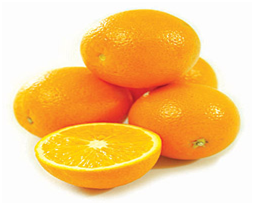
- Which fruits always travel in groups of two? Answer: pears! Pears are from the same family as apples but they are softer. They can be yellow, green, reddish or brown on the outside but they all have white, juicy flesh inside. One of the best-loved English pears is called Conference.
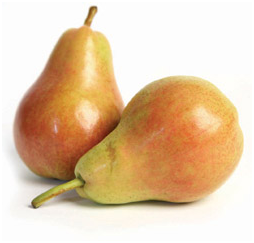
- It can take TWO YEARS to grow a pineapple. This rough, spiky fruit is actually made up of lots of smaller fruits that have stuck together. It was given its name because early explorers thought it looked like a pine cone. You could use the skin of a pineapple as a bowl to eat your fruit salad!
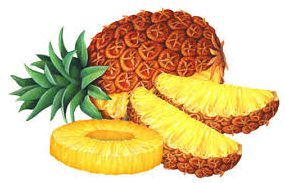
- This fruit comes from the same family as the pear, but it can't be eaten raw. Slices of quince taste lovely in an apple crumble. Quince smells of perfume when it's been cooked, which means that some people also use it as an air freshener for their home or car! Why don't you ask an adult if you can try doing the same?
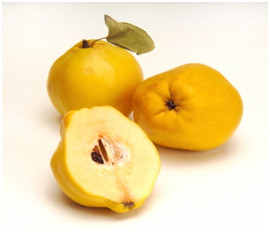
- Nearly half of all the world's raisins come from California - that's in America. Raisins start off as black grapes. The grapes are turned into raisins by drying them in the sun. Sultanas are made the same way but with green grapes. Mini boxes of raisins are perfect for packed lunches.
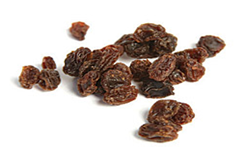
- Rhubarb was used in Asia long before it was first eaten in Britain. People sometimes grew it in their gardens just because it looked nice! It can be mixed with sweeter fruit like apple. Don't eat the leaves, they are poisonous!
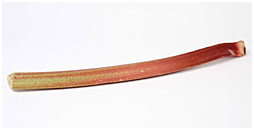
- Satsumas, clementines and mandarins are all different names for types of tangerine. They grow on trees and they grow best in warm weather. The juiciest ones are the heaviest ones. See if you can take the peel off in one piece!
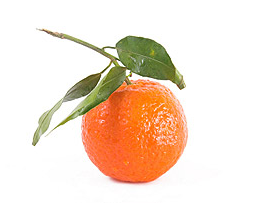
- Anyone for tennis? Followed by some strawberries of course! Around 25,000kg of strawberries are eaten at Wimbledon each year. Strawberries are actually members of the rose family. They are the only fruits to have their seeds on the outside - one strawberry can have as many as 200.
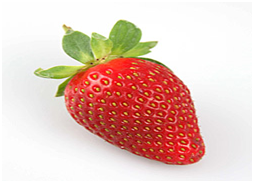
- An Ugli fruit is a cross between a grapefruit and a mandarin! It is about the size of a grapefruit but it tastes a bit sweeter and has a wrinkly skin that peels easily. This funky fruit comes from Jamaica and is also grown in the USA - and it's not that ugly! It can look a bit weird because its yellowy green skin is thick, rough and puffy - and sometimes a bit blotchy!
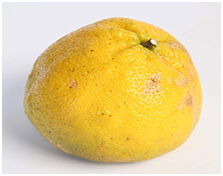
- Plums come in all sorts of colours but Victoria plums are dark red and are grown in England. They are super sweet eaten raw or can be cooked in tarts and crumbles. Plums have a stone inside. Can you think of other fruits that do?
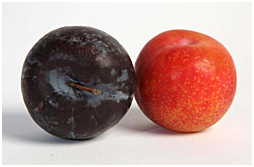
- Watermelons grow along the ground and they can be ENORMOUS. They contain lots of water and are really, really refreshing! In China, children love drinking watermelon juice in summer to help them stay cool. The Chinese name for a watermelon is xigua
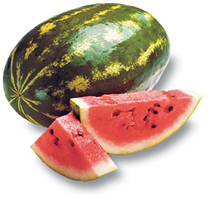
As the blackberry has always grown wild and is a widespread genus, it seems to be a native to many parts of the world.- Britain, North America and Africa. Captain John Smith was introduced to them growing in the wilds of America. Blackberry is a member of the rose family and not a true berry but a collection of drupelets. The blackberry is a climber. High in vitamin C.
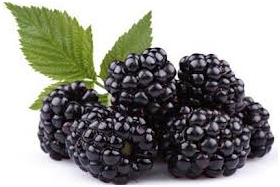
Sometimes called rockmelon was first cultivated in Italy and named after the city of Cantalupo. A canteloupe has a hard, scaly rind, not netted, should be football shape or almost round. Excellent source of vitamin A, high in vitamin C and magnesium, fair source of thiamin, some calcium, phosphorous, iron, potassium, riboflavin and niacin.
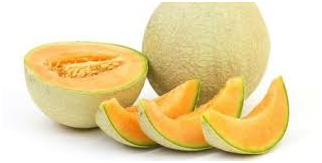
- Custard apple have thick scaly skin and a soft, smooth flesh with inedible seeds. They are picked before they are fully ripe, so allow 4-5 days for firm fruit fruit to ripe. Good source of vitamin C, fibre, magnesium and potassium.
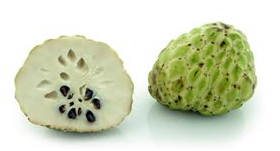
- Despite the fruit's disgusting smell, when ripe the flavour of the flesh, is the most delicious of tropical fruits. The fruit is eaten fresh and chilled, scooped out using a spoon and discarding the seeds. The rich custardy flesh can be eaten just as it is or pureed to make ice cream or milk shakes. The flesh is also used for making jam and cakes and is available canned.
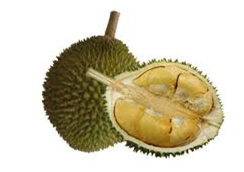
- One of the largest citrus fruit, a cross between the pomelo and the shaddock. High in vitamin C, grapefruits are best eaten raw, a traditional breakfast fruit - the best way to eat is to cut them in half and scoop out the flesh with a spoon.
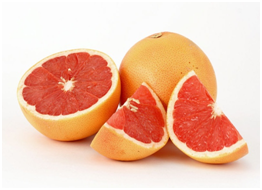
- is a member of Saxifrage family and botanically a berry. Some varieties are hairy and with colours ranging when ripe from green, white, yellow and red to almost black. All varieties can be picked young and cooked when green. High in vitamin A and C.
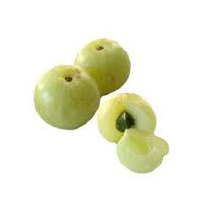
- when unripe both seeds and the flesh are eaten as a vegetables. Ripe fruit maybe eaten on its own or added to fruit salad.
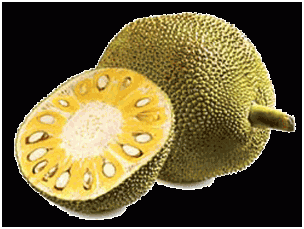
-(cumquat) the name means "golden orange" in Chinese. Kumquats are often preserved in sweet syrup and used for marmalade and garnishes, but fresh ones are delicious in fruit salads or for eating just as they are.
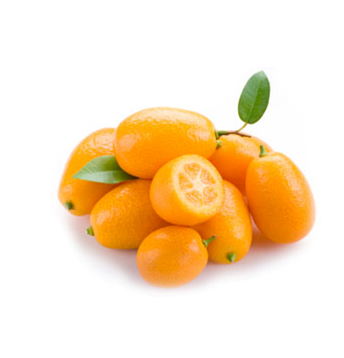
- are only green because they are picked unripe but if left to ripen they turn yellow. Limes can be used like lemons but as a juice is more acidic, usually less is needed. To make the juice flow more, you can microwave the limes for 2-3 seconds before squeezing. Mostly used in drinks (lime cordials) and in cooking.
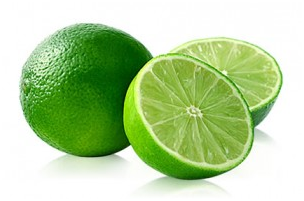
- fresh lychees are best eaten raw as a refreshing end to a meal. Simply remove the shells, then nibble or suck the flesh off the stone. Rich in Vitamin C.
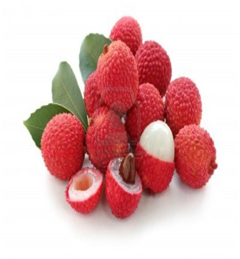
- or tangerines named after the city of Tangier in Morocco - a citrus fruit that is actually a variety of orange. Always choose deep orange to orange-red fruits, heavy for their size with birght lustre. Loose skin is normal but avoid fruits with punctures, mould soft spots or very pale skins.
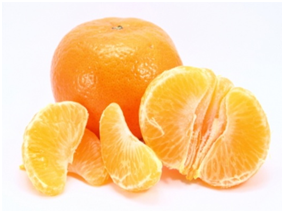
- contrary to its name, the mangosteen doesn't resemble or taste like the mango. It resemble like an apple- having a short stem and four thick leaf-like bracts which form a rosette encasing the brownish-purple fruit.
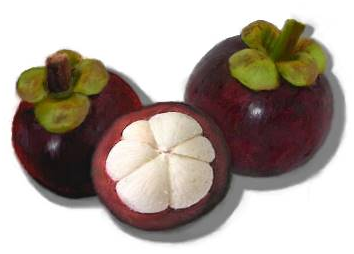
- The most popular variety is the purple passionfruit about the size of a chicken egg. it has a highly fragrant, sweet, but slightly tart, tasting fruit, can be spooned out and eaten fresh or added to fruit salad, pavlova, it makes a very popular drink, ice cream and sorbets and a flavouring for all kinds of desserts.
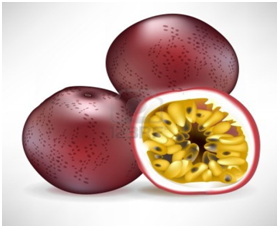
- or pawpaw, a large tropical fruit whose ripe flesh can be juicy, creamy, orange red or yellow. In the centre is a mass of large peppery black seeds which are edible and sometimes crushed and used as a spice. Ripe papaya is eaten as a breakfast fruit or as a dessert. it can be pureed for ice cream, sorbets and iced drinks.
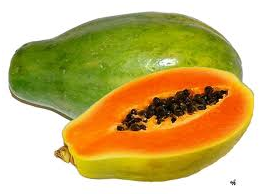
- the most familiar peaches are round or "beaked" with a pointed and they are seldom sold by variety but by color of their flesh- yellow or white. Which you choose is a matter of preference, some people believe that white peaches have the finer flavour. Peaches are delicious eaten on its own or in fruit salad.
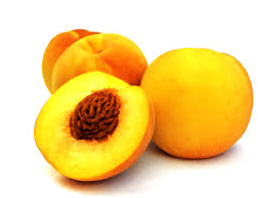
- the fruit of a tree originally from Japan, persimmons are now widely grown in all parts of the world. Resembling a tomato in appearance, the fruit is round and smooth-skinned, changing from yellow to red when it ripens. Eat as a dessert in fruit salads, in baking or in preserves.
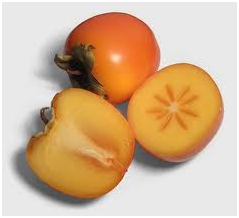
- an exotic looking fruit about the size of a large apple, with a thin tough skin- usually golden to deep red, filled with edible seeds in crimson pulp. To use, cut the fruit in half with a very sharp knife and scoop out the tangy sweet seeds, separate them from the white pith and eat them fresh. Can be added to salads, use as a garnish on sweet and savoury dishes or press to extract juice.
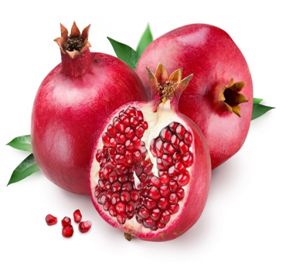
- a small citrus tree native to tropical Asia and the tropical world. Similar to grapefruit but larger and with a very thick rind. The rind comes off readily making segmenting the fruit easy. The flesh varies from yellow to pink and it is generally sweeter and not as tart as grapefruit.
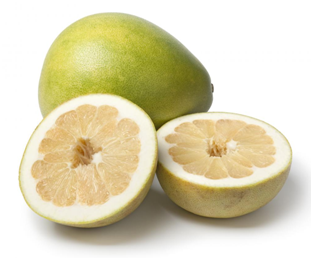
- the fruit grows in cluster, with a deep crimson outer skin. The flesh is translucent and the pale seed is edible when young. Related to lychees and are sometimes known as "hairy lychees".(about 5cm / 2inches in diameter) and look quite different but have a similar texture. They can be added to salads, can be made into jams or jellies but are best eaten on their own.
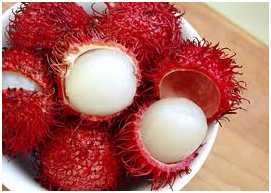
-a tropical fruit with rough, brown skin but are sweet and luscious like vanilla flavoured banana custard. Make sure the fruit is soft and thoroughly ripe as unripe flesh can be quite bitter.
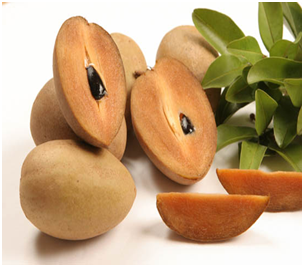
-The fruits are green to purple with a smooth skin. When sliced horizontally the flesh is translucent white with the seeds forming a star shape. it is best eaten ripe, scooped straight from the skin. It is ripe when soft and should be eaten immediately, but it is still alright to refrigerate for a few days.
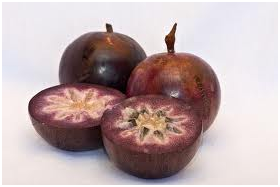
-related to tomatoes and sometimes called "tree tomatoes", they are the size of an egg tomato with dark red skin and the fruit has a strong sweet flavour suitable for both sweet or savoury dishes. It can be used in jams, chutneys and sorbets.
